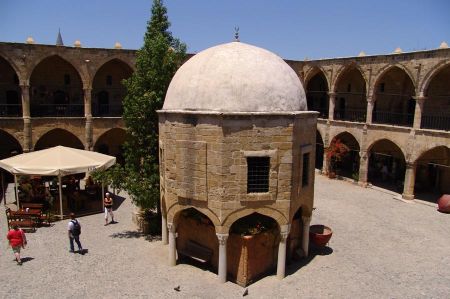Residential house Dervis Pasha - Mevli Tekke
- Written by Portal Editor
The owner and planner of this two-story 19th century residential house was Dervis Pascha, the editor of the first Turkish daily newspaper in Cyprus.
The house is located in the historically significant Arap Ahmet district, which has many exclusive residential buildings from the past centuries.
Reopened as a cultural history museum
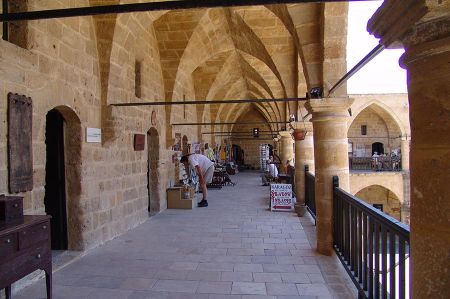 The main entrance to the building also shows the year of construction in 1807 in an inscription, but the owner used the Muslim calendar and therefore 1219 is given as the year of construction here.
The main entrance to the building also shows the year of construction in 1807 in an inscription, but the owner used the Muslim calendar and therefore 1219 is given as the year of construction here.
Later, today's main room was added to the building, in which the second entrance is located. The year 1869 can be seen as the year of construction in the ceiling, which is richly decorated with ornaments.
The residential building is built in the shape of a large “L”, which creates a large courtyard. The rooms on the ground floor all open onto the inner courtyard, giving the impression of a series of pavilions in an almost circular design.
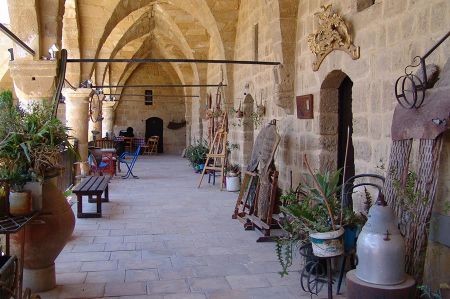 A wooden staircase, which is supported by the construction of the water storage tanks in the inner courtyard, leads to the second floor where all doors also open to a free interior space that, when covered, provides sufficient protection from the weather.
A wooden staircase, which is supported by the construction of the water storage tanks in the inner courtyard, leads to the second floor where all doors also open to a free interior space that, when covered, provides sufficient protection from the weather.
After extensive restoration work between 1978 and 1988, the house was reopened as a cultural history museum.
Today it includes the main room, the bridal room, the dining room and several other sections where there are many ancient artifacts of Cypriot history on display.
The Mevli Tekke Museum
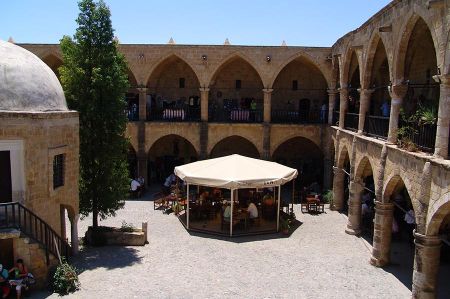 South of the Kyrenia Gate in Lefkosa lies the Mevlana Museum, a beautifully restored 16th century rectangular building with six towers.
South of the Kyrenia Gate in Lefkosa lies the Mevlana Museum, a beautifully restored 16th century rectangular building with six towers.
This building was designed and built by Arap Ahmet Paşa, who came to the island during the Ottoman conquest of Cyprus.
Arap Ahmet Paşa, who, together with the commander of the conquering army, Lala Mustafa Paşa, belonged to the brotherhood of the Mevlevi Order, a brotherhood founded by Mevlana Jalaladdin Rumi and also known as the “Dancing Dervishes”.
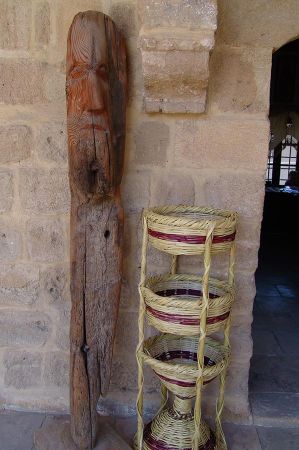 Until 1930, dances of death were regularly held inside the building, after which it was used as accommodation for travellers of the Mevlana Brotherhood until the last leader of the order died in 1954. There are several grave sites inside the building and also a “semahane”, a meeting place to listen to religious music and go into a trance in a spinning, “twirling”, dancing manner. The dance floor is still in good condition. Sixteen of the brotherhood's former leaders are buried in the six grave sites.
Until 1930, dances of death were regularly held inside the building, after which it was used as accommodation for travellers of the Mevlana Brotherhood until the last leader of the order died in 1954. There are several grave sites inside the building and also a “semahane”, a meeting place to listen to religious music and go into a trance in a spinning, “twirling”, dancing manner. The dance floor is still in good condition. Sixteen of the brotherhood's former leaders are buried in the six grave sites.
Today this house can also be seen as an ethnological museum, as it shows a range of Cypriot clothing, cooking utensils and handwritten minutes of court hearings up to 1950.
Please read as well:
The port city of Famagusta - today Gazimağusa
History of the Roman City of Soli on Cyprus
-
 Museum Mevli Tekke at Nicosia
Museum Mevli Tekke at Nicosia
Museum Mevli Tekke at Nicosia
Museum Mevli Tekke at Nicosia
-
 Museum Mevli Tekke at Nicosia
Museum Mevli Tekke at Nicosia
Museum Mevli Tekke at Nicosia
Museum Mevli Tekke at Nicosia
-
 Museum Mevli Tekke at Nicosia
Museum Mevli Tekke at Nicosia
Museum Mevli Tekke at Nicosia
Museum Mevli Tekke at Nicosia
-
 Museum Mevli Tekke at Nicosia
Museum Mevli Tekke at Nicosia
Museum Mevli Tekke at Nicosia
Museum Mevli Tekke at Nicosia
-
 Museum Mevli Tekke at Nicosia
Museum Mevli Tekke at Nicosia
Museum Mevli Tekke at Nicosia
Museum Mevli Tekke at Nicosia
-
 Museum Mevli Tekke at Nicosia
Museum Mevli Tekke at Nicosia
Museum Mevli Tekke at Nicosia
Museum Mevli Tekke at Nicosia
-
 Museum Mevli Tekke at Nicosia
Museum Mevli Tekke at Nicosia
Museum Mevli Tekke at Nicosia
Museum Mevli Tekke at Nicosia
-
 Museum Mevli Tekke at Nicosia
Museum Mevli Tekke at Nicosia
Museum Mevli Tekke at Nicosia
Museum Mevli Tekke at Nicosia
-
 Museum Mevli Tekke at Nicosia
Museum Mevli Tekke at Nicosia
Museum Mevli Tekke at Nicosia
Museum Mevli Tekke at Nicosia
-
 Museum Mevli Tekke at Nicosia
Museum Mevli Tekke at Nicosia
Museum Mevli Tekke at Nicosia
Museum Mevli Tekke at Nicosia
-
 Museum Mevli Tekke at Nicosia
Museum Mevli Tekke at Nicosia
Museum Mevli Tekke at Nicosia
Museum Mevli Tekke at Nicosia
-
 Museum Mevli Tekke at Nicosia
Museum Mevli Tekke at Nicosia
Museum Mevli Tekke at Nicosia
Museum Mevli Tekke at Nicosia
-
 Museum Mevli Tekke at Nicosia
Museum Mevli Tekke at Nicosia
Museum Mevli Tekke at Nicosia
Museum Mevli Tekke at Nicosia
-
 Museum Mevli Tekke at Nicosia
Museum Mevli Tekke at Nicosia
Museum Mevli Tekke at Nicosia
Museum Mevli Tekke at Nicosia
-
 Museum Mevli Tekke at Nicosia
Museum Mevli Tekke at Nicosia
Museum Mevli Tekke at Nicosia
Museum Mevli Tekke at Nicosia
https://www.alaturka.info/en/cyprus/nicosia/6528-residential-house-dervis-pasha-mevli-tekke#sigProId811eeb0a08
